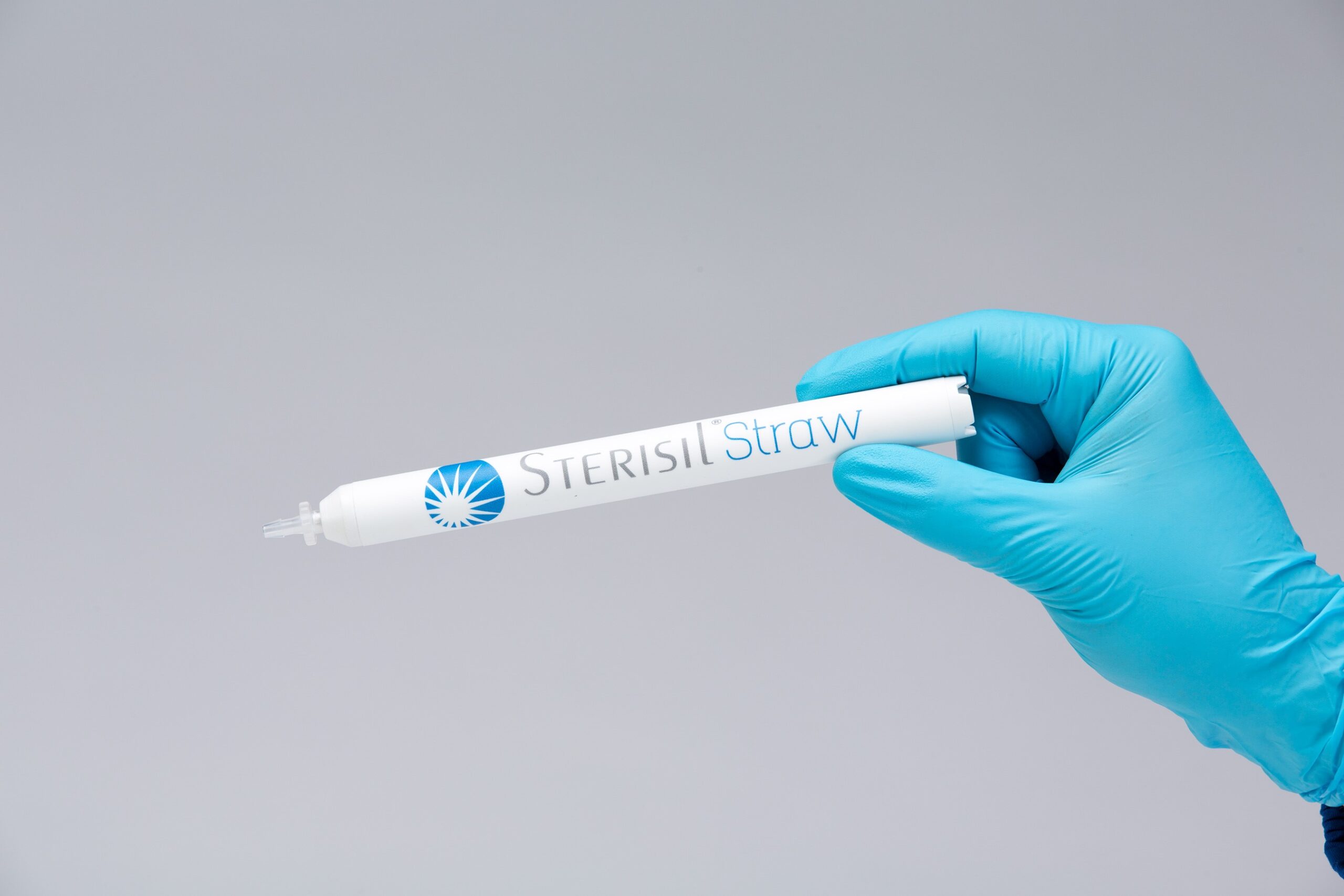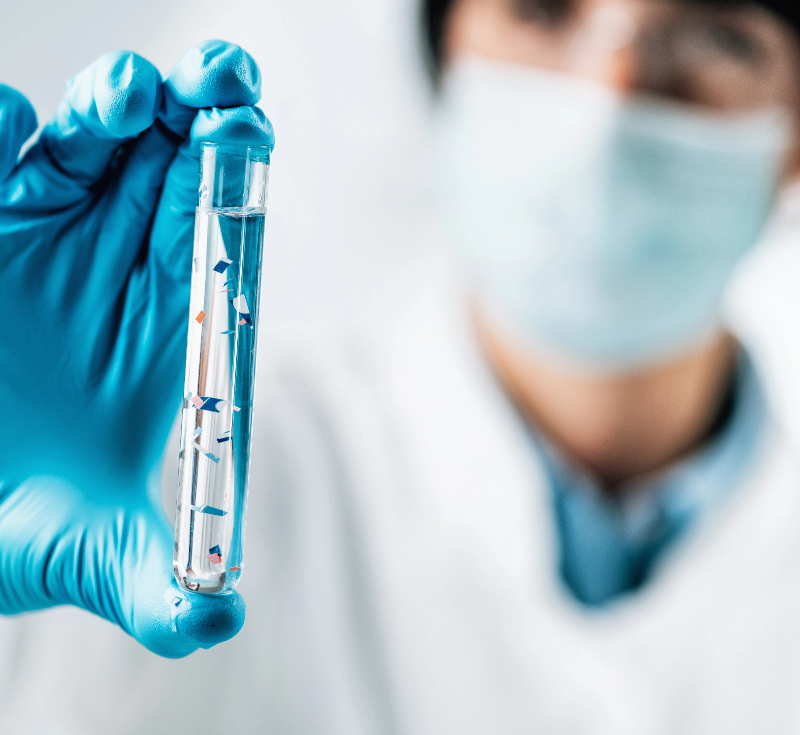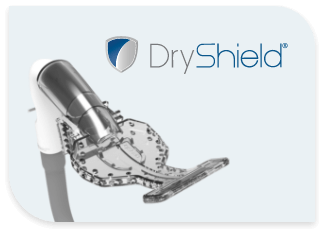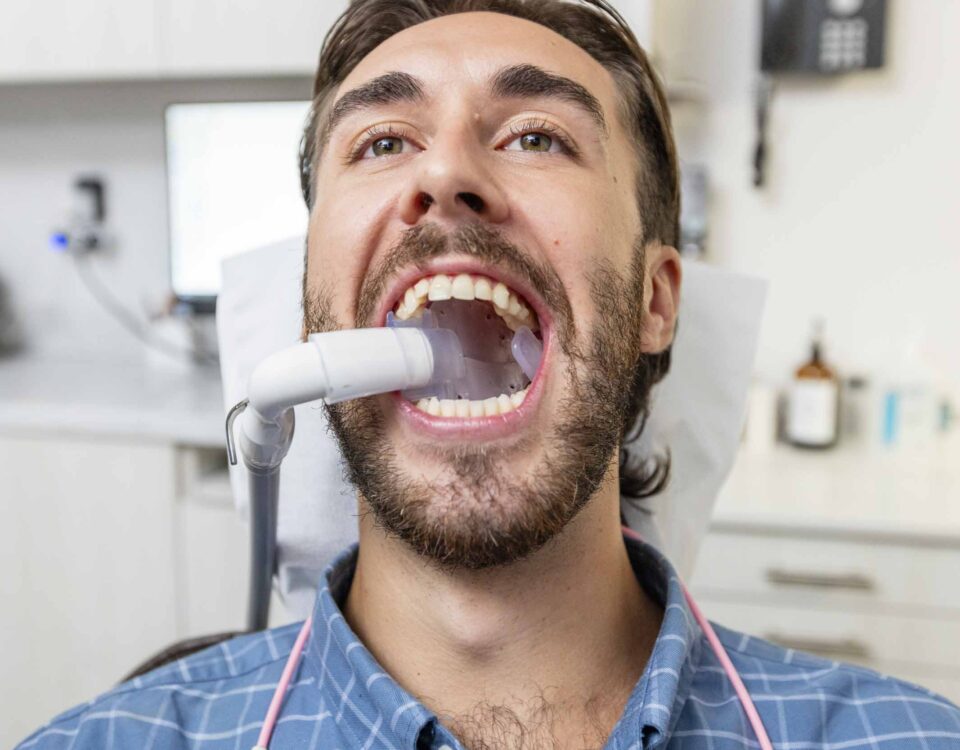Silver Vs. Iodine: Choosing the Best Dental Waterline Treatment
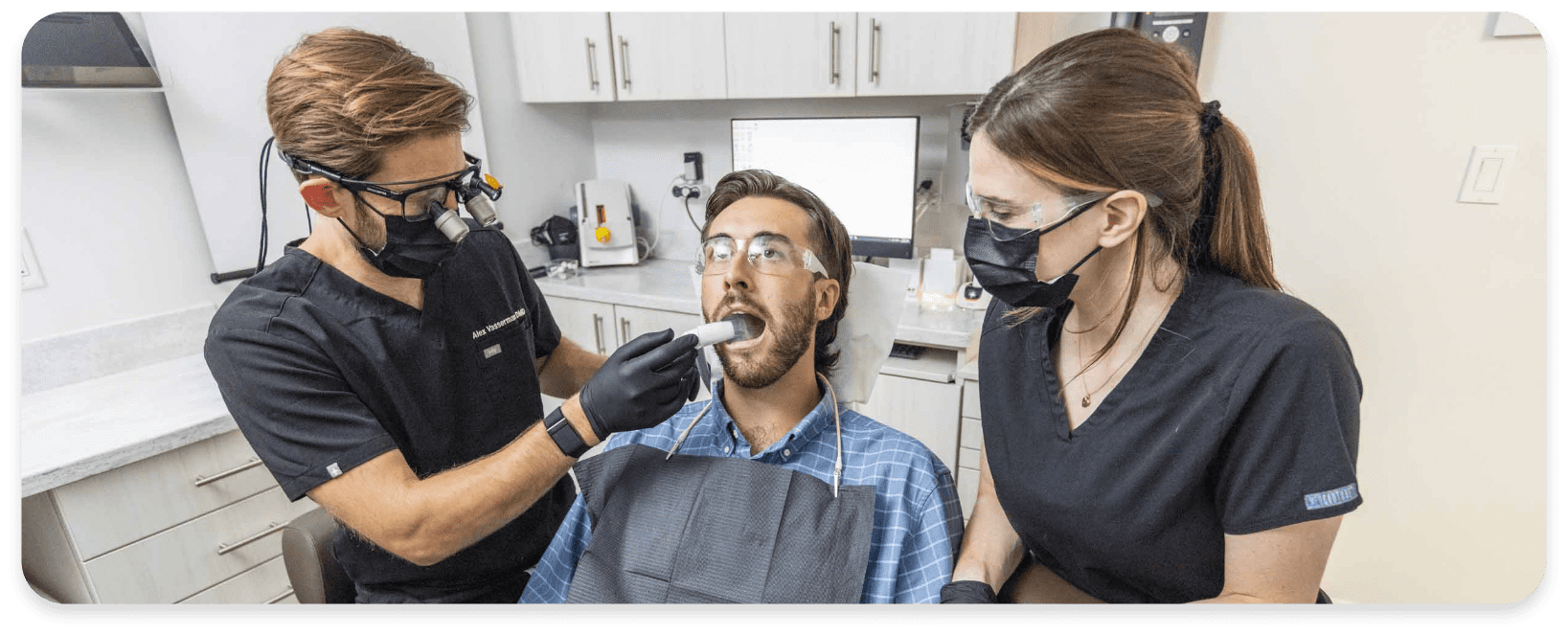
How DryShield Helps Practices Boost Productivity — And Why Now’s the Best Time to Invest
July 8, 2025
Texas Floods & Dental Water Safety: What Every Practice Needs to Know Now
July 15, 2025Silver Vs. Iodine: Choosing the Best Dental Waterline Treatment
Every dental professional wants to believe their waterline treatment is working… until a failed test proves otherwise. Waterline compliance isn't just about meeting state regulations or passing occasional CFU checks; it's about protecting your patients and your practice every single day.
If you’ve ever had to replace your straw before you intended because it stopped working, or had to explain unpleasant water taste to a patient, then you know how frustrating and disruptive poor waterline maintenance can be. That’s why choosing the right treatment method matters.
Among the most commonly used long-term disinfection options are iodine-based straws and silver ion-based straws. Both are designed to keep microbial growth in check. But not all treatment technologies perform equally—or consistently. Let’s take a deeper look at the real differences between these two solutions and what they mean for your day-to-day operations
Silver and Iodine: What They Are and How They Work
Iodine-based straws have long been used in dental waterline treatment. These straws work by releasing iodine into the water to kill microorganisms via oxidative stress. It’s a time-tested approach, but not without limitations. While effective, the release rate can fluctuate.
Something that many people don’t know about silver ion technology is that its antimicrobial properties have been used for centuries. People used to drop silver coins into water barrels to maintain the water’s quality. If you take a look around your house, you may be surprised to find just how many household items use silver as a disinfectant.
Silver doesn’t oxidize, but instead disrupts bacterial DNA, cellular respiration, and membrane function, essentially rendering bacteria incapable of reproducing. This mechanism makes silver a powerful long-term antimicrobial agent that doesn’t rely on harsh chemistry.
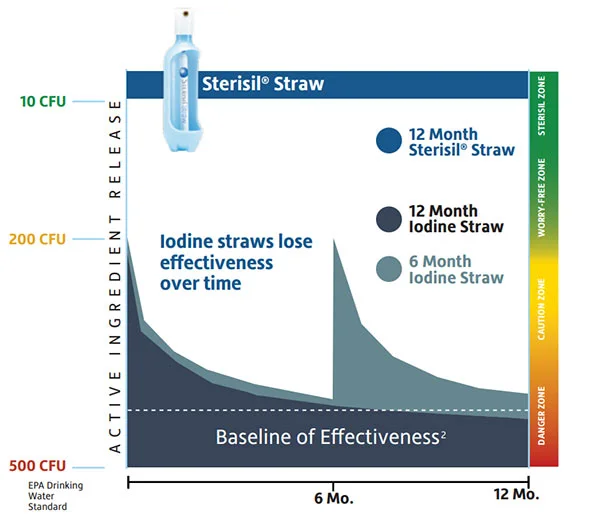
Iodine is EPA-registered to treat water 200 CFU/mL and below, meaning your water quality is starting in the caution zone. Sterisil® Straws, which use silver ion technology, are EPA-registered to consistently treat water below 10 CFU/mL for 365 days
Efficacy and Elution Consistency
Iodine: Powerful but Prone to Drop-Off
Iodine’s biggest weakness is its inconsistency. While it can be effective early on, it is also highly sensitive to water chemistry, usage patterns, and even temperature. In some cases, iodine may over-elute—meaning it releases too much too quickly—depleting the disinfectant before the end of its expected lifecycle.
Because of this, practices are often advised to test iodine levels around the 5-month mark using test strips. In many systems, a second straw must be installed halfway through the year to maintain proper dosing. That’s twice the product, twice the labor, and twice the chance for something to go wrong.
Silver: Stable and Reliable
Silver ions, by contrast, elute at a controlled and consistent rate. The Sterisil® Straw is guaranteed to maintain CFU counts below 10/mL for a full 365 days. No test strips, no second straw, and no guesswork.
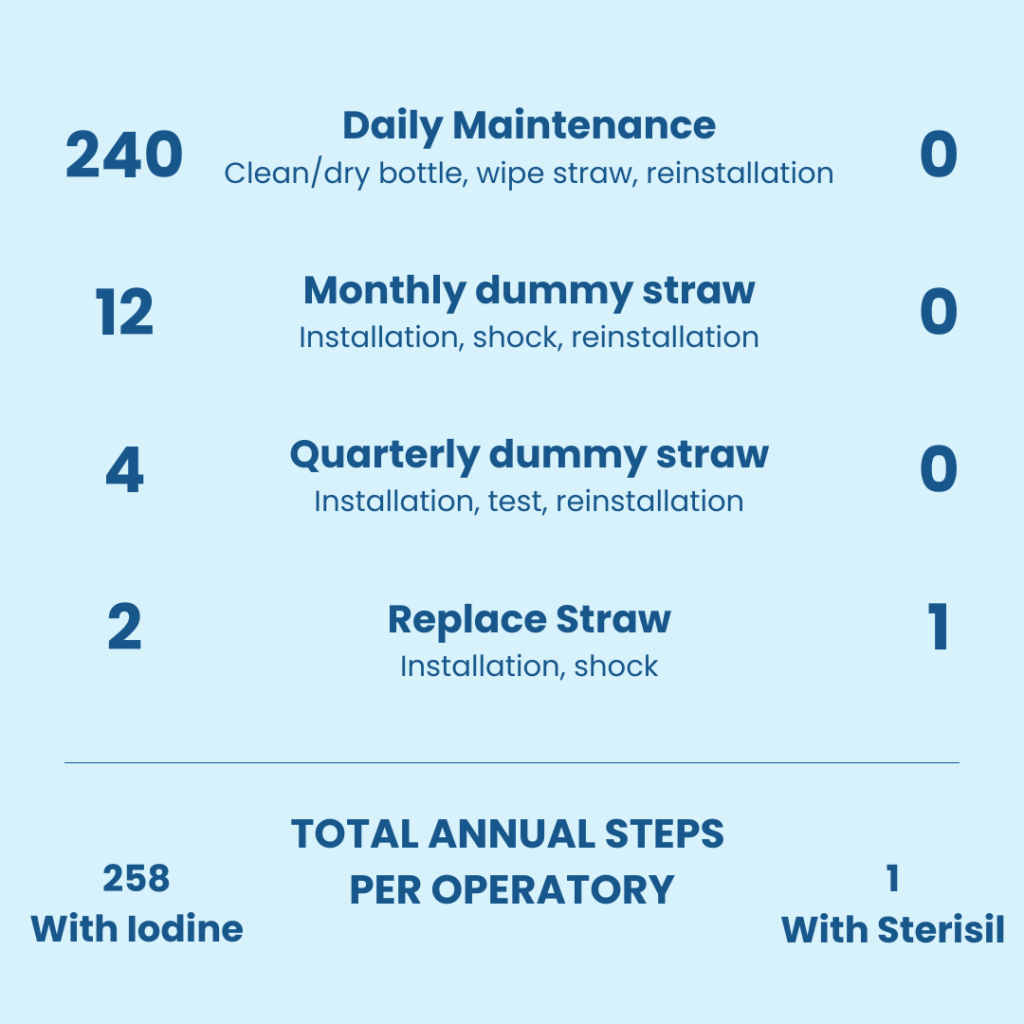
Maintenance and Workflow Disruptions
When you're running a busy practice, any extra step can become a barrier to compliance. That’s why simplicity matters. With iodine, monitoring and mid-year intervention are part of the process. If you forget to test or replace your straw, your waterline disinfection may be compromised.
With silver, your straw works for you, not the other way around. The straw stays in the water bottle, continuously treating the water—even when the unit isn’t in use—reducing the risk of biofilm regrowth during off-hours.
Plus, the Sterisil® Straw includes a built-in shock treatment upon installation, helping you start clean from day one and simplifying your regular monthly maintenance schedule.
Safety, Taste, and Staff Experience
Taste, Odor, and Safety
Patients often notice subtle changes in water quality, even if they don't say anything. Iodine, while effective, can sometimes impart a metallic taste or leave discoloration in the waterlines.
Silver ions, by comparison, are odorless, tasteless, and safe at the low concentrations used for dental applications. There are no inhalation risks for staff, and no concerns about patient discomfort or questioning during treatment.
Protecting Your Equipment
Another benefit of silver is its gentleness. Because iodine works through oxidation, it has the potential to interact with and degrade sensitive components in your waterlines over time.
Silver ion technology does not rely on oxidation, making it safer for amalgam separators, valves, and handpieces. It’s a cleaner solution, both biologically and mechanically
The Final Verdict: Is Silver the Smarter Choice?
For practices looking for simplicity, stability, and strong compliance, silver-based disinfection systems are becoming the modern gold standard. Fewer replacements, no test strips, and no mid-year disruptions—just a straw that works quietly in the background.




